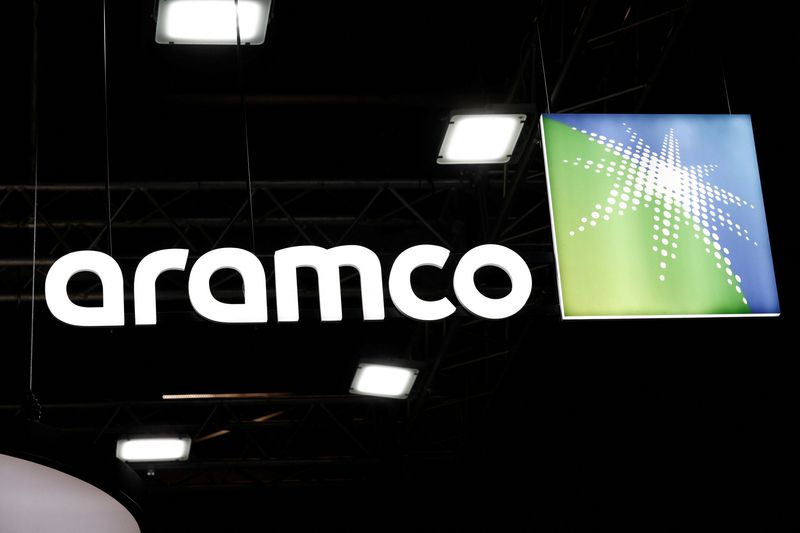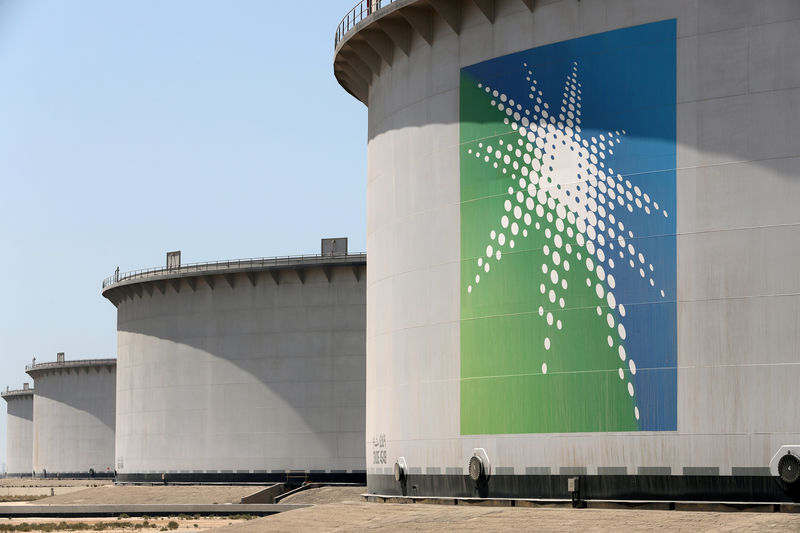By Hadeel Al Sayegh, Maha El Dahan and Yousef Saba
DUBAI (Reuters) – Saudi Arabia’s government filed papers on Thursday to sell a new stake in state oil giant Aramco (TADAWUL:) that could fetch as much as $13.1 billion, a landmark deal to boost its plan to help finance Crown Prince Mohammed bin Salman’s efforts to diversify the economy. economy.
In the bulk of the deal, Saudi Arabia could raise $12 billion by offering about 1.545 billion Aramco shares, equivalent to about 0.64% of the company, if it sells at the high end of a range of 26 .7 ($7.12) to 29 riyals. This is evident from Aramco’s filing on the Saudi Exchange in Riyadh.
The deal’s value could rise to $13.1 billion at the top end under a so-called greenshoe option that would allow the sale of nearly 1.7 billion shares, or a 0.7% stake. This option allows bankers to use shares to stabilize the price of the offering.
Investors have long anticipated the stock sale as the energy giant has sought to broaden its base while generating funds to boost Saudi Arabia’s economic diversification program.
“The offering gives us the opportunity to broaden the shareholder base among both Saudi and international investors,” Aramco CEO Amin Nasser told reporters on a call after the announcement.
“It also provides us with an opportunity to increase liquidity and increase our global index weighting.”
The offering is the culmination of a years-long effort to sell another chunk of one of the world’s most valuable companies following its record-setting 2019 initial public offering that raised $29.4 billion. About 10% of the latest offering will be reserved for private investors, depending on demand.
Sources told Reuters last week that the offering could take place as early as June.
Since its initial public offering, Aramco has remained a cash cow for the Saudi government, financing a massive economic boost to end the kingdom’s “oil addiction,” as the crown prince once called it.
The latest deal will allow the kingdom to finance major domestic projects related to that agenda, said Hasan Alhasan, a senior fellow at the International Institute for Strategic Studies.
Having missed its foreign direct investment target and facing a budget deficit of up to $21 billion, “the kingdom is resorting to selling shares in Aramco and debt issuances,” he said.
“The kingdom will likely continue to redirect capital to other sectors, including renewable energy, technology, tourism, logistics and manufacturing, which Riyadh hopes will be sources of long-term economic growth,” he added.
Aramco shares closed 0.17% lower at 29.1 riyals ($7.76) on Thursday, giving the company a market capitalization of about $1.87 trillion. Its IPO price valued it at $1.7 trillion, but shares traded 10% higher in their debut, roughly in line with its current valuation.
The company increased dividends from the $75 billion it had been paying annually to almost $98 billion by 2023, even as profits fell by almost a quarter. It expects to spend $124.3 billion this year.
Aramco has also invested in refineries and petrochemical projects in China and elsewhere, expanded its retail and trading operations and sharpened its focus on gas, making its first foray into liquefied gas abroad last year.
Morgan Stanley, Citi, Goldman Sachs, HSBC, Saudi National Bank, Bank of America and JPMorgan are acting as joint global coordinators for the deal, with local banks Al Rajhi Capital, Riyad Capital and Saudi Fransi Capital acting as joint bookrunners.
There were about half the number of banks involved in the deal compared to Aramco’s 2019 IPO.
DIVERSIFICATION DRIVE
Saudi Arabia’s de facto ruler, MbS, as the crown prince is known, has poured hundreds of billions of dollars into mega-projects through the kingdom’s sovereign wealth fund, including everything from electric vehicles to sports and a new airline, to diversify the economy away of hydrocarbons and create jobs.
But lower oil prices and lower production weighed on economic growth last year while spending rose, leading to a budget deficit of around 2% of GDP, with a similar deficit expected this year.
Aramco introduced a special performance-based dividend last year, bringing cash to the kingdom and attracting new investors.
The company has also appointed more banks as market makers to help improve liquidity in the stock.
The world’s largest oil exporter trades at a higher price-to-earnings ratio than other global oil companies, including ExxonMobil (NYSE:), BP (NYSE:) and Shell (LON:).
The stock is down about 12% this year, while shares of ExxonMobil and BP are up about 14% and 4%, respectively.
Saudi Arabia is the de facto leader of the Organization of the Petroleum Exporting Countries and helps drive price movements in world oil markets.
Aramco currently produces about 9 million barrels of crude oil per day, about three-quarters of its maximum capacity, to meet production cuts agreed by OPEC and its allies, known as OPEC+.
OPEC+ will decide on its next production policy on Sunday, and several sources and analysts expect the meeting to push existing cuts into the second half of 2024.

Should OPEC+ surprise the market and cut production further, oil prices could rise from the current $82 per barrel, but Aramco would have to cut production and face even lower revenues.
($1 = 3.7506 riyals)


